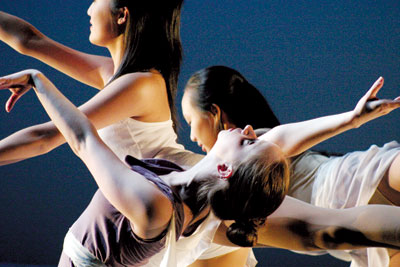All Nonfiction
- Bullying
- Books
- Academic
- Author Interviews
- Celebrity interviews
- College Articles
- College Essays
- Educator of the Year
- Heroes
- Interviews
- Memoir
- Personal Experience
- Sports
- Travel & Culture
All Opinions
- Bullying
- Current Events / Politics
- Discrimination
- Drugs / Alcohol / Smoking
- Entertainment / Celebrities
- Environment
- Love / Relationships
- Movies / Music / TV
- Pop Culture / Trends
- School / College
- Social Issues / Civics
- Spirituality / Religion
- Sports / Hobbies
All Hot Topics
- Bullying
- Community Service
- Environment
- Health
- Letters to the Editor
- Pride & Prejudice
- What Matters
- Back
Summer Guide
- Program Links
- Program Reviews
- Back
College Guide
- College Links
- College Reviews
- College Essays
- College Articles
- Back
How to Stand
Keep your heels together; don’t have one foot more turned out than the other; keep them as rotated as possible but don’t strain it; lengthen the back of your legs, engage your hamstrings and not your quads; keep your legs straight but don’t lock them, you don’t want to hurt yourself; don’t stand too far away from the barre, but also don’t be too close; you need to estimate the perfect distance to create the right line when you take the barre; make sure you keep equal weight on both of your feet; spread your toes on the floor and don’t roll forward onto your front ones; don’t sickle your feet and don’t let your lower legs bend in; rotate from your hips not your knees; engage your deep six rotators but not your glutes; imagine your pelvis is a bowl, don’t spill the water in the bowl forwards or backwards; keep your torso straight and tilting slightly forwards, but don’t stick your butt out, that breaks the line; shoulders should be back and down, but don’t pinch your shoulder blades; don’t tense up, stay relaxed; make sure you keep space in your armpits and between your arms and your torso; keep a soft bend in your arms, it should look effortless; tilt your upper arms forwards and your forearms back and your hands forwards, that’s how to create the perfect line; now hold your thumbs out and pull your index fingers up a bit, now pull your middle finger in, ring finger out a little more, and pinky the furthest back; but don’t have any tension in your fingers, they should appear to be floating; make sure your elbows are in front of your body but not in front of your hands; lengthen your neck but don’t strain it; keep it aligned with the rest of your body, you can’t have any breaks in your line; keep your shoulders down; tilt your head up and to the right, but just slightly, you don’t want it to look forced; keep your gaze lifted, and don’t smile, but look like you’re having fun; take a deep breath and let go of any remaining tension in your body; now you are ready to begin dancing.

Similar Articles
JOIN THE DISCUSSION
This article has 0 comments.

I have grown up dancing, so I have become used to the unique specificity that is required to do any move, even standing. Many people don't realize the specificity that is required in ballet, thinking that when you are standing you are just standing, but the reality is that there is so much work that goes into it, so many things you have to think about and be doing all at once, in order for it to look natural and flawless.